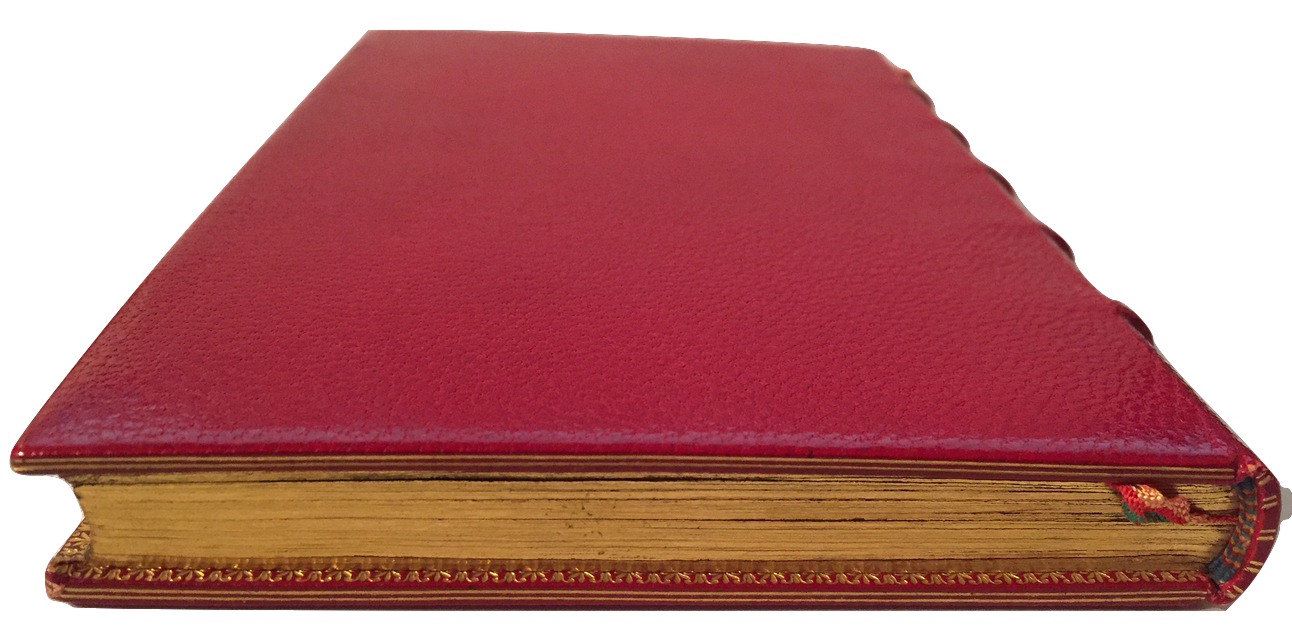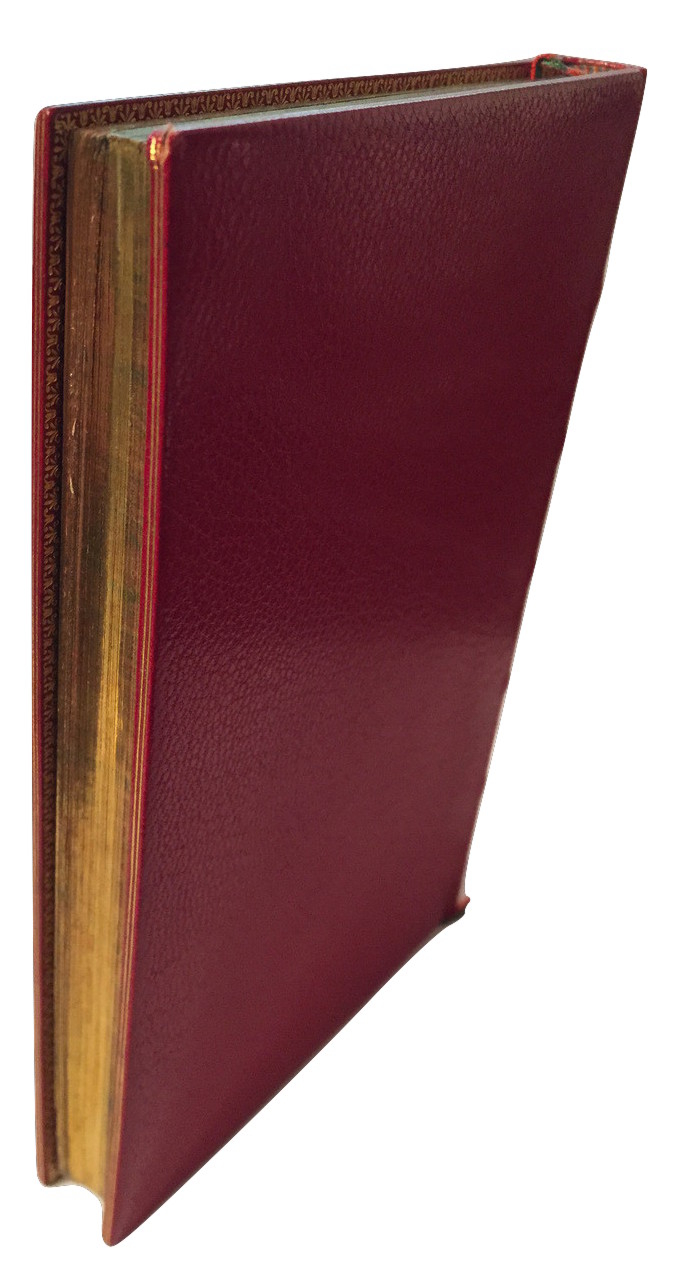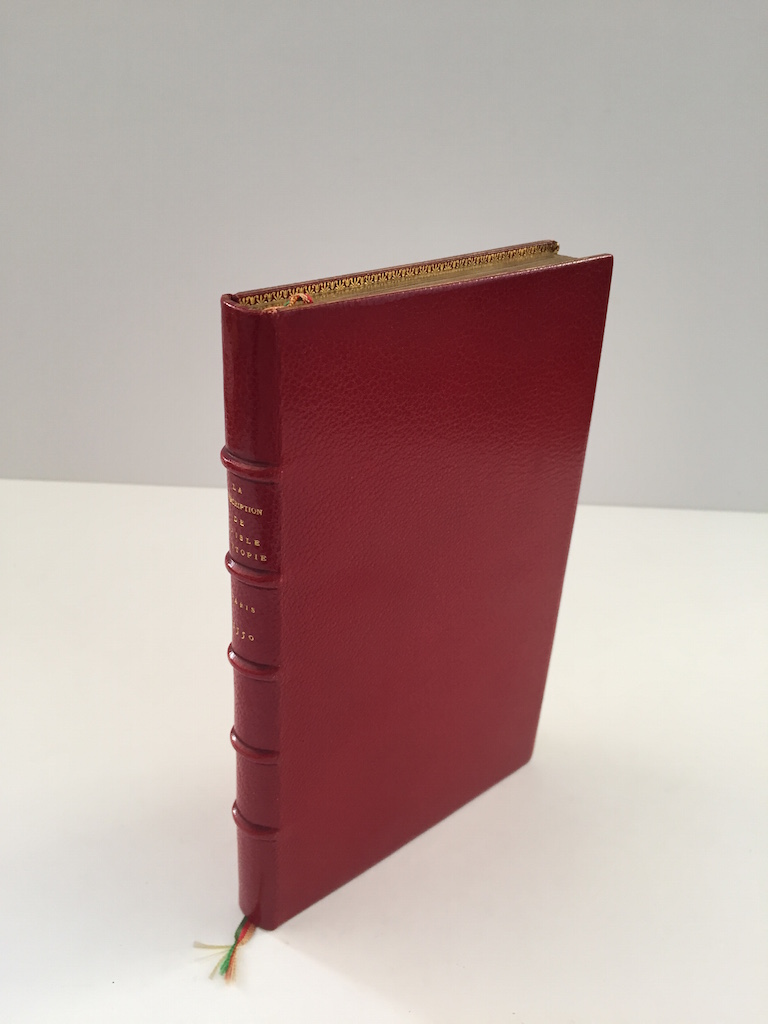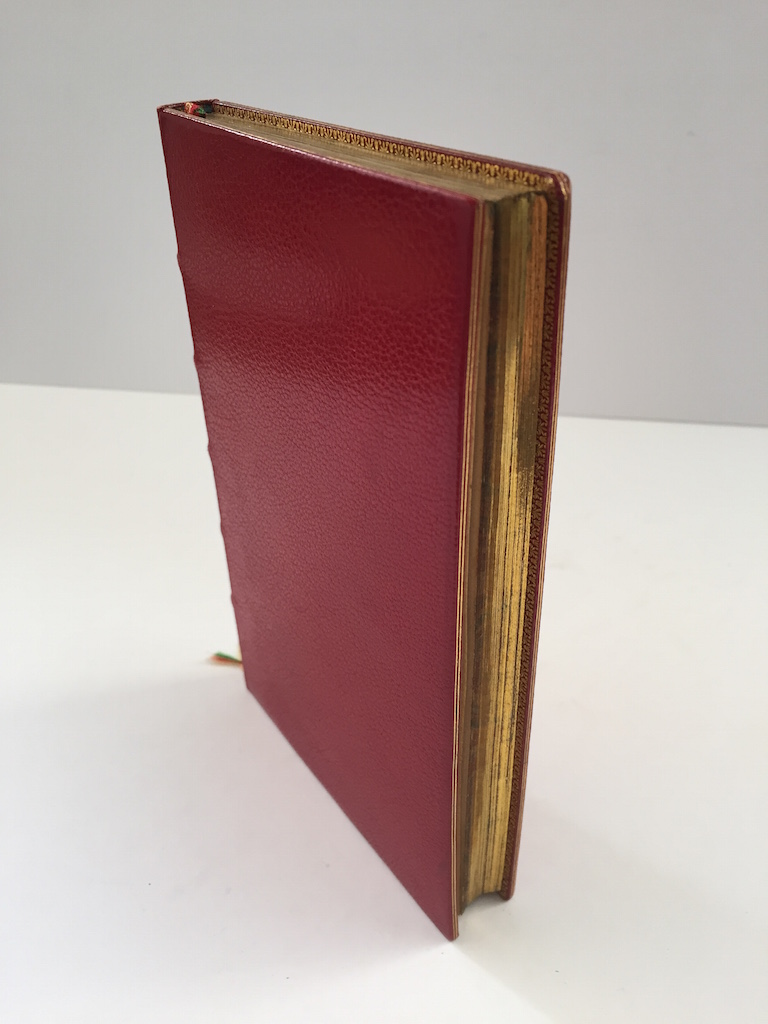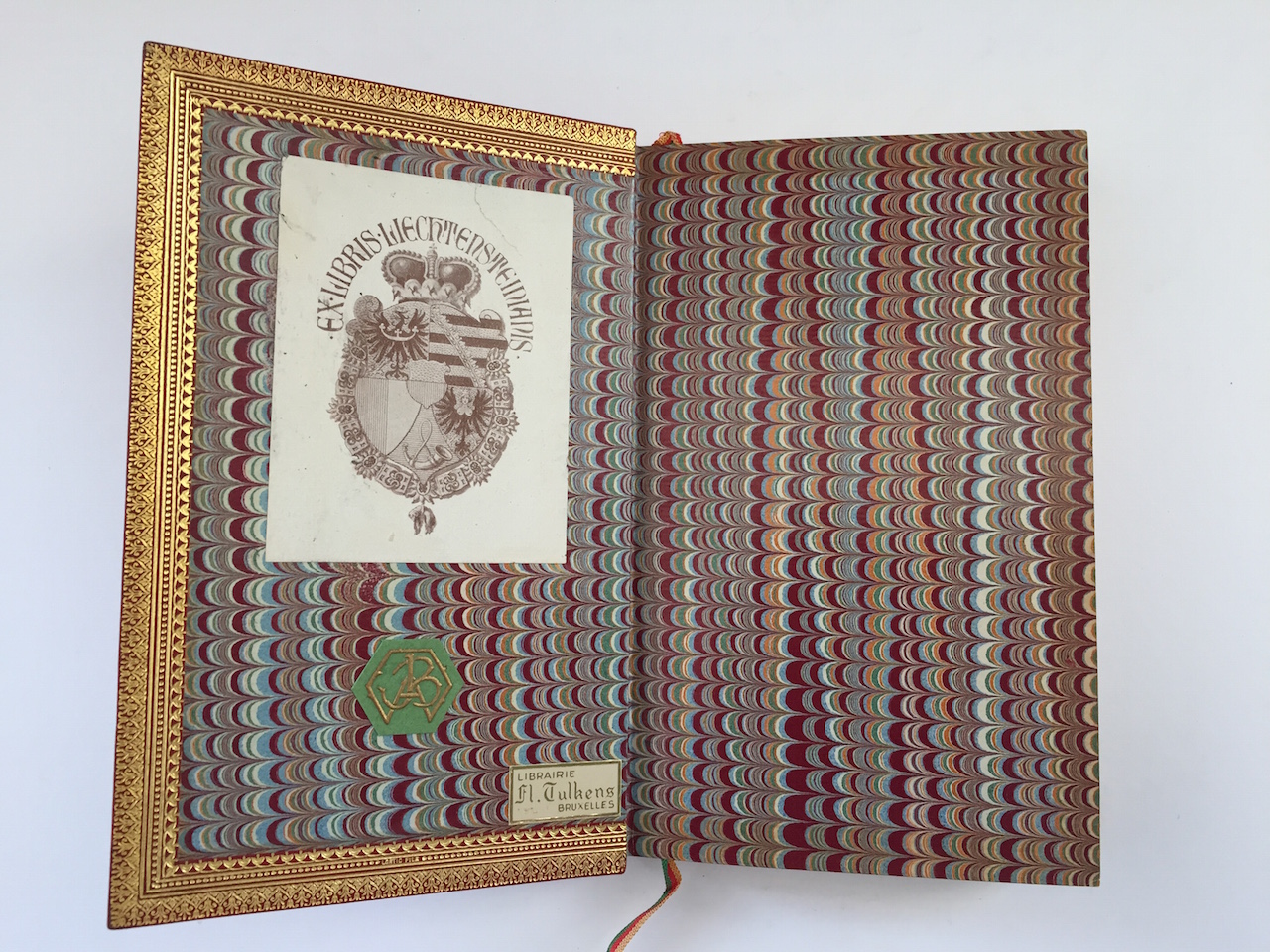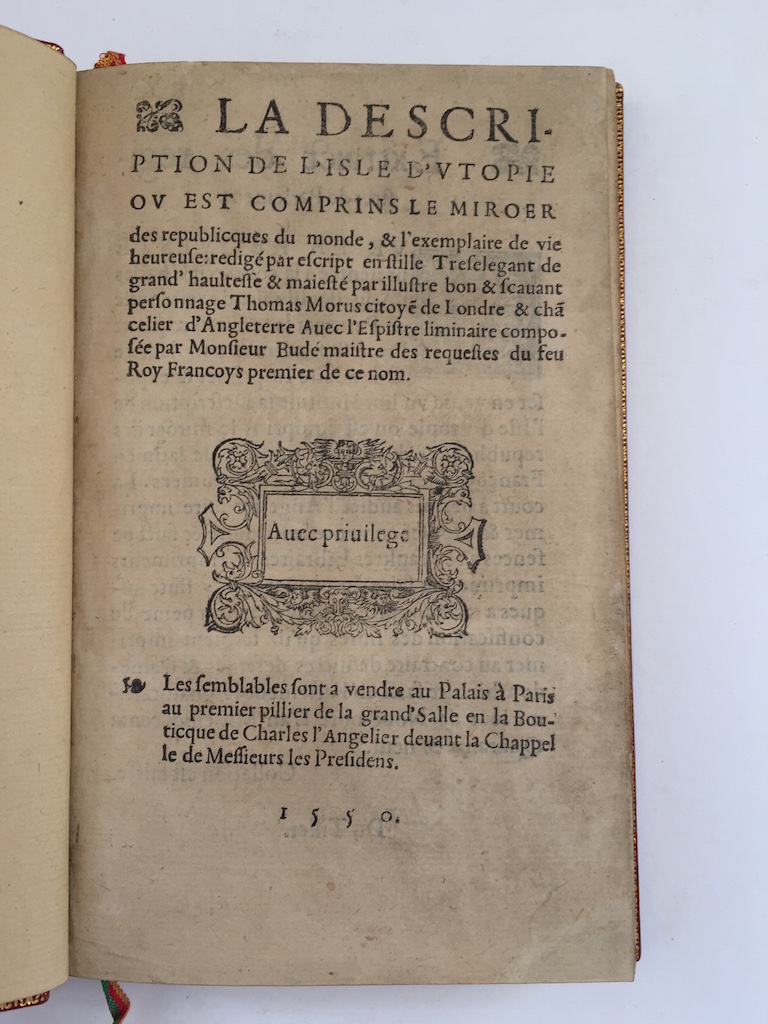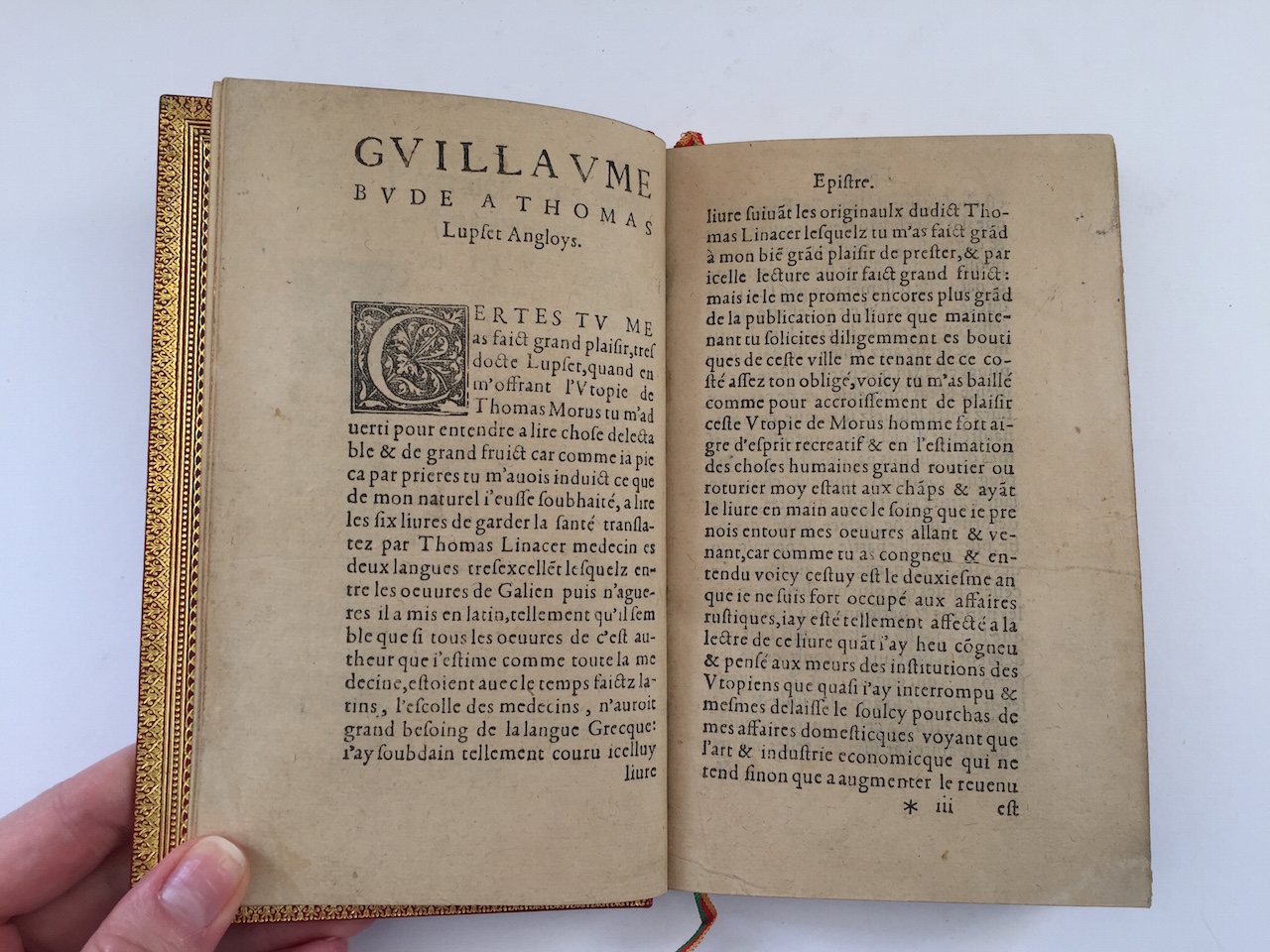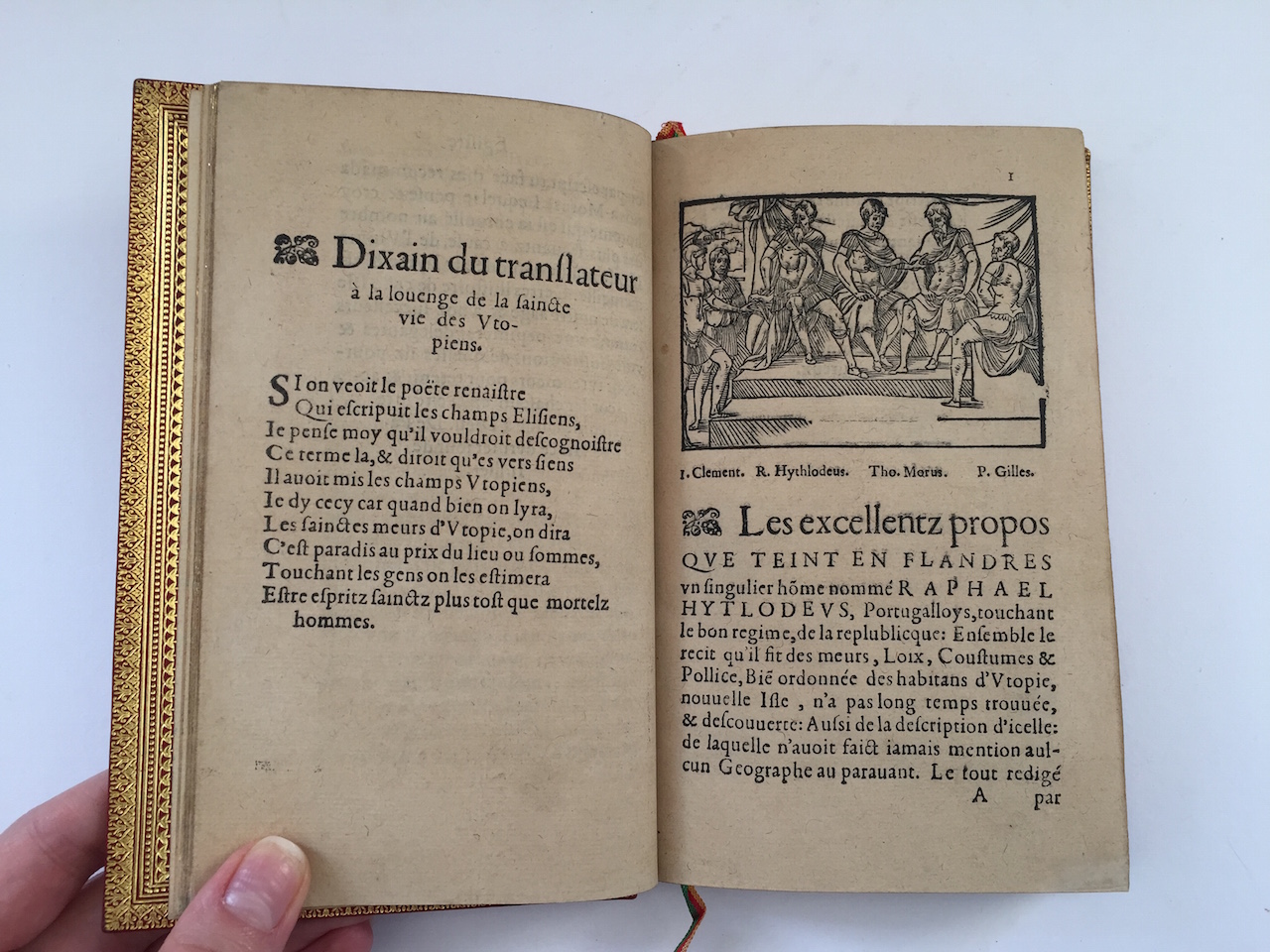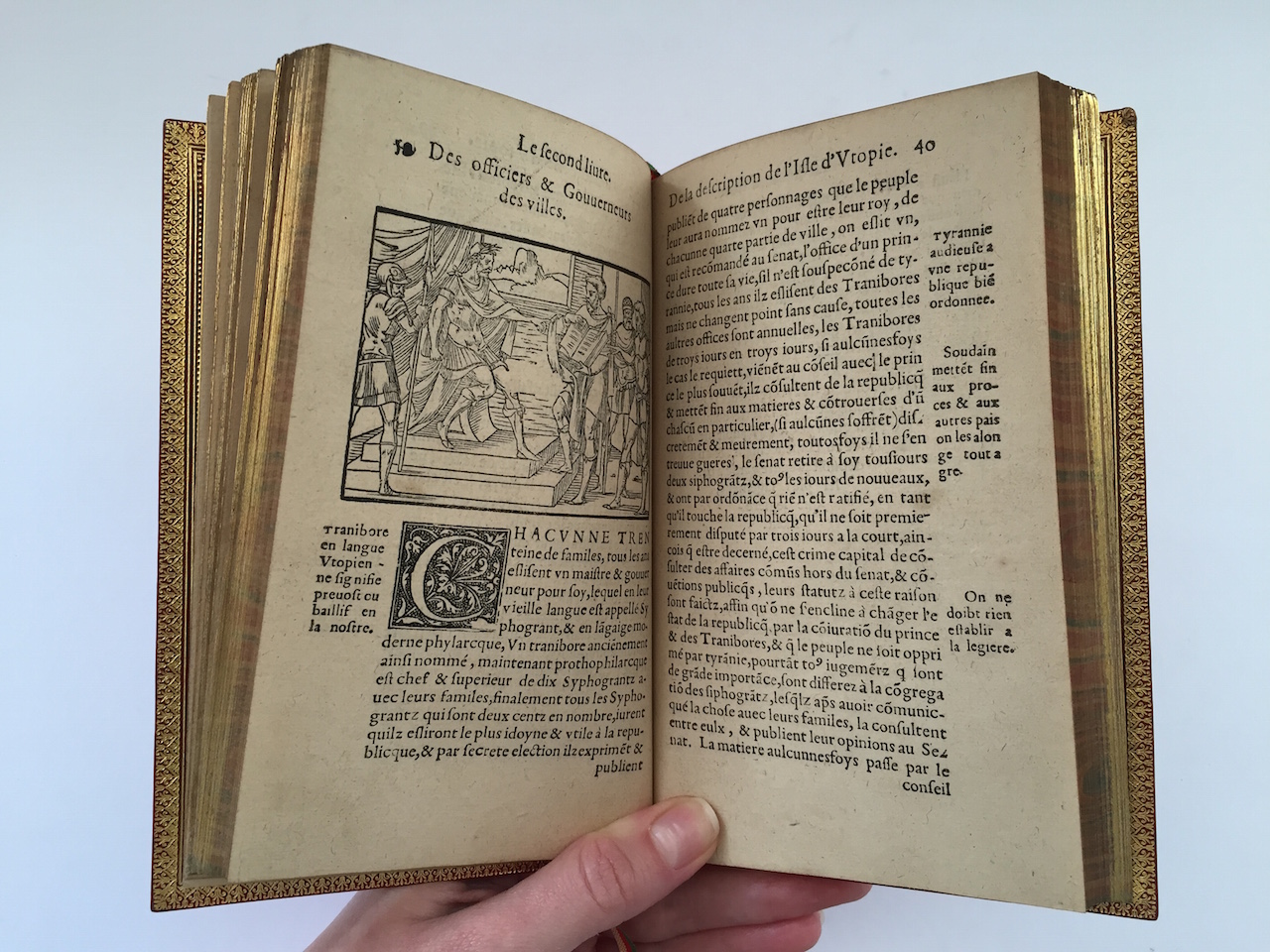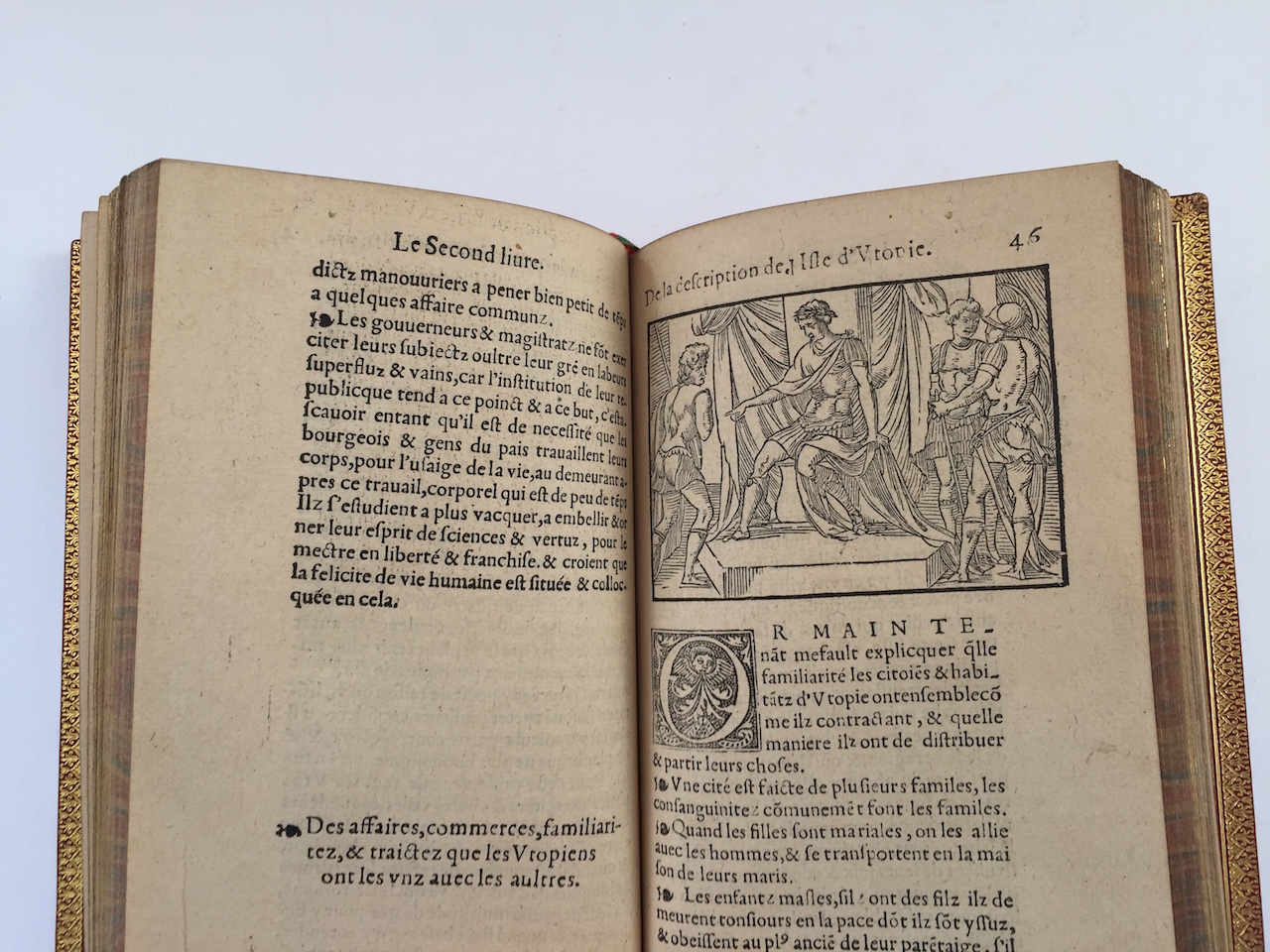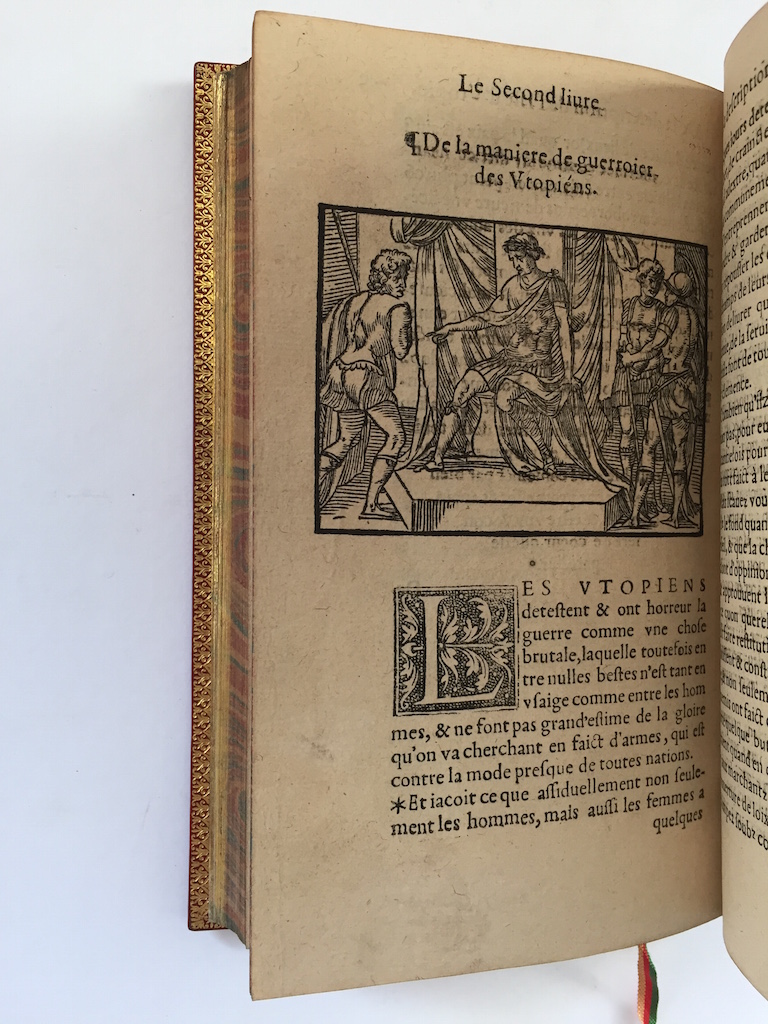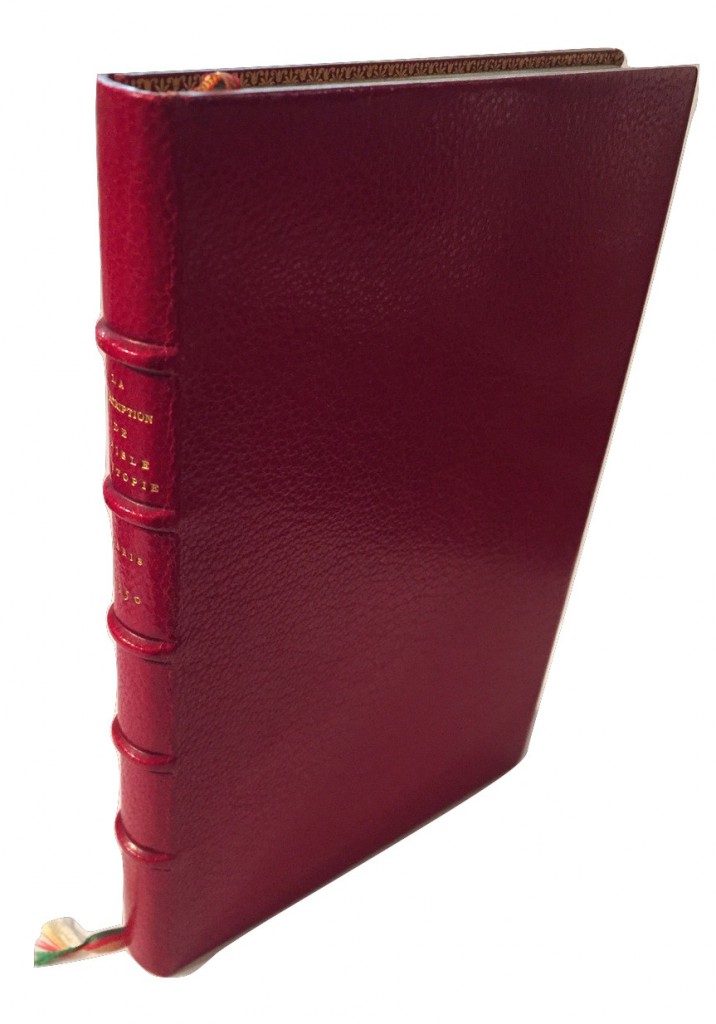MORE, St. Thomas
THE LIECHTENSTEIN-BONNA COPY
La Description de L’Isle Utopie
Paris, Charles L᾽Angelier, 1550£29,500.00
FIRST EDITION thus. 8vo., ff. (viii) 105 (vii). Roman letter, several woodcut cartouches, white on black woodcut initials, cartouche and printer’s device on verso of last, twelve circa half page woodcut in text. Very light age browning, a good, clean, well-margined copy in C19 crushed crimson morocco, inner dentelles gilt, all edges gilt.
First edition of the first French translation of Sir Thomas More’s “Utopia,” by Jean Le Blond d’Evreux, lawyer, poet, and champion of the French language. Le Blond’s one great chance, as he recognized, was to bring himself to the attention of the elite of the French-speaking world; it did not succeed and Le Blond is only gradually being rediscovered. His translation includes also the prefatory address from Budé to Thomas Lupet.
By far the most important of More’s Latin works was the Utopia, the pre-eminent humanistic dialogue, appealing for the application of wisdom in the life and government of men and at the same time a delightful work of entertainment and irony. The origin of a new word in the English language (and subsequently in many others), the work was the model or source for innumerable ‘Utopias’ or ‘distopias’, from Bacon’s ‘New Atlantis’ in the C17, to Swift in the C18, to Huxley and Orwell in the C20. It was More’s greatest literary work, achieving immediate international success, probably the most significant and enduring by any Englishman of the age.
“It was written, like Gulliver’s Travels (…) as a tract for the times to rub in the lesson of Erasmus; it inveighs against the new statesmanship of an all-powerful autocracy and the new economics of large enclosures and the destruction of the old common-field agriculture, just as it pleads for religious tolerance and universal education. (…) Utopia is not, as often imagined, More’s ideal state; it exemplifies only the virtues of wisdom, fortitude, temperance and justice. It reflects the moral poverty of the states which More knew, whose Christian rulers should possess also the Christian virtues of Faith, Hope and Charity. (…) [More] is both a saint to the Catholic and a predecessor of Marx to the Communist. His manifesto is and will be required reading for both, and for all shades of opinion between.” Printing and the Mind of Man 47, on the first edition.
BM. STC. Fr. p. 319. Gibson 19. Brunet III, 1894 “Edition rare.” Fairfax Murray 391 “In text are nine woodcuts apparently executed for this work, besides the pretty cut of a scribe in different style (…) which occurs on A2, E1 and D2.”“Suite de cinq vignettes (56 x 78) dont deux répètées deux fois, d’un bon style, montrant divers personnages, drapés à l’antique, discourant ou rendant la justice. Petite vignette, répètée trois fois, de l’écrivain à sa table, un chien couché à ses pieds, utilisée dans de nombreux ouvrages.” Brun, p. 256.In stock



